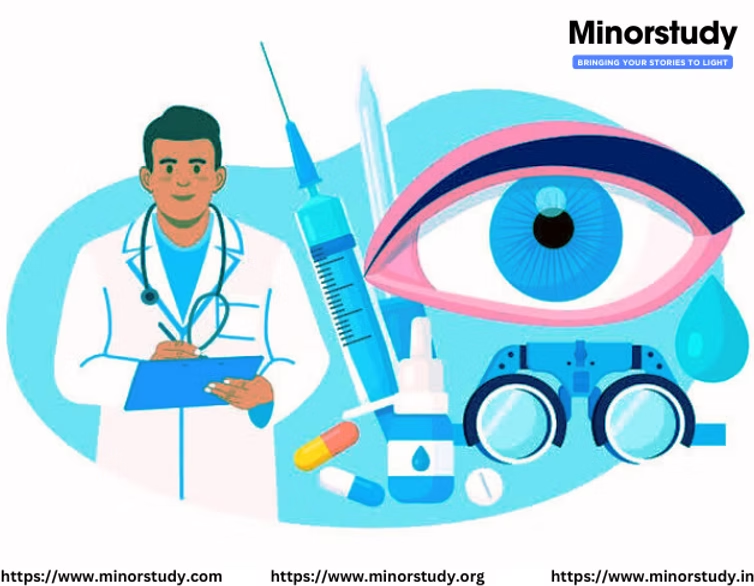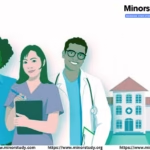Ophthalmology
Ophthalmology is the branch of medicine and surgery that deals with the diagnosis, treatment, and prevention of eye disorders. Ophthalmologists are specialized doctors trained to manage a wide range of eye-related conditions, from vision correction to complex surgeries.
Overview
Scope of Practice: Includes eye exams, prescribing glasses or contact lenses, diagnosing eye diseases, performing surgeries, and managing systemic conditions affecting the eyes.
Educational Path:
Medical Degree (MBBS or equivalent).
Specialized training in ophthalmology (Residency or Postgraduate studies).
Importance and Significance
Vision Preservation: Early detection and treatment of eye conditions can prevent blindness or vision impairment.
Advanced Surgical Techniques: Ophthalmologists perform intricate surgeries like cataract removal, corneal transplants, and retinal repairs.
Public Health Impact: Contributes to reducing the global burden of visual impairment.
Common Eye Conditions Treated
Condition | Description |
Cataracts | Clouding of the eye’s natural lens, often age-related. |
Glaucoma | Damage to the optic nerve due to increased intraocular pressure. |
Refractive Errors | Includes myopia (nearsightedness), hyperopia (farsightedness), and astigmatism. |
Macular Degeneration | Affects the central part of the retina, leading to vision loss. |
Diabetic Retinopathy | Damage to retinal blood vessels due to diabetes. |
Conjunctivitis (Pink Eye) | Inflammation or infection of the conjunctiva. |
Dry Eye Syndrome | Insufficient tear production leading to discomfort. |
Key Specializations in Ophthalmology
Subspecialty | Focus Area |
Cornea and External Diseases | Disorders of the cornea, sclera, conjunctiva, and eyelids. |
Retina and Vitreous | Management of retinal diseases like diabetic retinopathy and retinal detachment. |
Glaucoma | Diagnosis and treatment of glaucoma to prevent optic nerve damage. |
Pediatric Ophthalmology | Specialized care for children with eye disorders. |
Oculoplastics | Reconstruction of the eye and surrounding structures, including cosmetic surgery. |
Neuro-Ophthalmology | Eye disorders related to the nervous system, such as optic neuritis or brain injuries. |
Ophthalmic Oncology | Diagnosis and management of eye tumors and cancers. |
Roles and Responsibilities
Role | Description |
Vision Exams | Assessing visual acuity and prescribing corrective lenses. |
Diagnosis of Eye Diseases | Identifying and managing conditions like glaucoma, cataracts, and macular degeneration. |
Surgical Interventions | Performing surgeries such as LASIK, cataract extraction, and retinal repairs. |
Eye Disease Prevention | Educating patients about eye care and disease prevention. |
Research and Innovation | Advancing treatments and surgical techniques for eye conditions. |
Common Diagnostic Tools
Tool | Purpose |
Ophthalmoscope | Examines the retina and optic nerve. |
Slit Lamp | Provides a detailed view of the eye’s structures. |
Tonometry | Measures intraocular pressure to diagnose glaucoma. |
Optical Coherence Tomography (OCT) | Non-invasive imaging of the retina and optic nerve. |
Visual Field Test | Assesses peripheral vision. |
Table of Eye-Related Surgeries and Treatments
Procedure | Purpose |
Cataract Surgery | Removes the cloudy lens and replaces it with an artificial one. |
LASIK (Laser Eye Surgery) | Corrects refractive errors like myopia and hyperopia. |
Vitrectomy | Removes and replaces the vitreous gel in the eye. |
Glaucoma Surgery | Reduces intraocular pressure to prevent optic nerve damage. |
Corneal Transplant | Replaces damaged or diseased corneal tissue. |
Retinal Detachment Repair | Reattaches the retina to restore vision. |
Global Significance
Ophthalmology plays a crucial role in addressing preventable blindness. According to the World Health Organization (WHO), over 2.2 billion people worldwide have a vision impairment, and many of these cases are treatable with timely intervention.
Quotes on Vision and Eye Care
“The eyes are the windows to the soul.” – Traditional Proverb
“Sight is a faculty; seeing is an art.” – George Perkins Marsh
Conclusion
Ophthalmology combines medical expertise and advanced technology to preserve and restore vision. With its impactful role in public health and quality of life, it remains a vital field of medicine.








